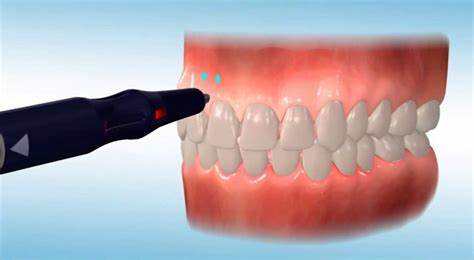Orthodontics is a specialized field within dentistry that focuses on diagnosing, preventing, and correcting dental and facial irregularities. It primarily deals with the alignment of teeth and jaws to improve oral health, function, and aesthetics.
Cosmetic dentistry, on the other hand, is a branch of dentistry that focuses on improving the appearance of teeth, gums, and smile. Both orthodontics and cosmetic dentistry play significant roles in enhancing a patient’s smile, but they have distinct objectives and treatments.
Understanding Orthodontics
Orthodontics primarily addresses issues related to the alignment of teeth and jaws. Common orthodontic problems include:
Malocclusion: This refers to misalignment of teeth, leading to issues like overbites, underbites, crossbites, and open bites.
Crowding: When there isn’t enough space in the jaw for teeth to align properly, it can result in crowding, overlapping, or twisted teeth.
Spacing: Gaps between teeth can occur due to missing teeth or abnormal tooth development.
Protrusion: Some patients may have protruding front teeth, which can affect their bite and facial aesthetics.
Dental Midline Discrepancy: Misalignment of the center line of upper and lower teeth can affect the overall symmetry of the smile.
Orthodontic treatments aim to correct these issues through various methods, including braces, clear aligners (like Invisalign), retainers, and other appliances. The goal is to improve bite function, enhance oral health, and create a harmonious smile.
see also: What Are The 3 Categories of Orthodontics?
Role of Orthodontics in Cosmetic Dentistry
While orthodontics primarily focuses on functional aspects like bite correction and jaw alignment, it also plays a significant role in cosmetic dentistry. Here are key points highlighting the intersection of orthodontics and cosmetic dentistry:
Smile Aesthetics: Orthodontic treatments often result in a more aesthetically pleasing smile. Straightening teeth, closing gaps, and aligning the bite can dramatically improve the overall appearance of the smile.
Confidence Boost: Correcting dental issues through orthodontic treatment can boost a patient’s confidence and self-esteem. A beautiful smile can positively impact social interactions and professional opportunities.
Long-Term Oral Health: Properly aligned teeth are easier to clean and maintain, reducing the risk of tooth decay, gum disease, and other oral health issues. Orthodontic treatments contribute to long-term dental health.
Functional Improvement: While aesthetics are a key component, orthodontic treatments also improve bite function, speech clarity, and chewing efficiency. These functional improvements are essential for overall oral health and quality of life.
Comprehensive Treatment: In many cases, orthodontic treatment is part of a comprehensive dental care plan that includes other cosmetic procedures like teeth whitening, dental bonding, and veneers.
Orthodontics sets the foundation for a beautiful and healthy smile.
Orthodontics Vs. Cosmetic Dentistry
It’s important to note that while orthodontics contributes significantly to cosmetic enhancements, it is not solely considered cosmetic dentistry. Cosmetic dentistry encompasses a broader range of treatments aimed specifically at improving dental aesthetics, such as:
Teeth Whitening: Professional whitening treatments to brighten stained or discolored teeth.
Dental Veneers: Thin porcelain shells bonded to the front of teeth to improve color, shape, and alignment.
Dental Bonding: Using tooth-colored resin to repair chipped, cracked, or uneven teeth.
Gum Contouring: Reshaping and sculpting the gum line to improve the appearance of the smile.
Dental Implants: Replacing missing teeth with artificial implants that look and function like natural teeth.
While orthodontic treatments can have cosmetic benefits, their primary focus is on functional improvements and overall oral health. Cosmetic dentistry, on the other hand, specifically targets aesthetic enhancements to create a beautiful smile.
Conclusion
In conclusion, orthodontics plays a significant role in cosmetic dentistry by improving smile aesthetics, boosting confidence, enhancing oral health, and providing functional benefits. While orthodontic treatments contribute to a more attractive smile, they are distinct from cosmetic dentistry, which encompasses a broader range of aesthetic procedures. By understanding the intersection of orthodontics and cosmetic dentistry, patients can make informed decisions about their dental care to achieve optimal oral health and a beautiful smile.
FAQs
What is the difference between an orthodontist and a cosmetic dentist?
Orthodontists and cosmetic dentists have overlapping areas of expertise but serve different purposes. Orthodontists specialize in correcting misaligned teeth and jaws using appliances like braces, aligners, and retainers. Their focus is on improving bite function and alignment for oral health benefits. On the other hand, cosmetic dentists primarily focus on enhancing the appearance of the teeth, gums, and smile. They may offer services such as teeth whitening, veneers, dental bonding, and gum contouring to improve the aesthetics of a person’s smile.
Are orthodontics considered cosmetic?
While orthodontic treatments can have cosmetic benefits by improving the appearance of the smile, they are primarily considered a branch of dentistry focused on correcting bite issues, misaligned teeth, and jaw problems. Orthodontic treatments aim to improve oral health and function, although they often result in aesthetic improvements as well.
What is classed as cosmetic dentistry?
Cosmetic dentistry refers to dental procedures and treatments that are performed to enhance the appearance of a person’s smile, teeth, and gums. These procedures may include teeth whitening, dental veneers, dental bonding, gum contouring, dental implants for aesthetic purposes, and smile makeovers. The goal of cosmetic dentistry is to improve the overall aesthetics of a person’s smile and boost their confidence.
What is another name for cosmetic dentistry?
Cosmetic dentistry is sometimes referred to as aesthetic dentistry or smile enhancement dentistry. These terms highlight the focus of these dental procedures on improving the appearance of the teeth and smile rather than addressing specific oral health issues like cavities or gum disease.

